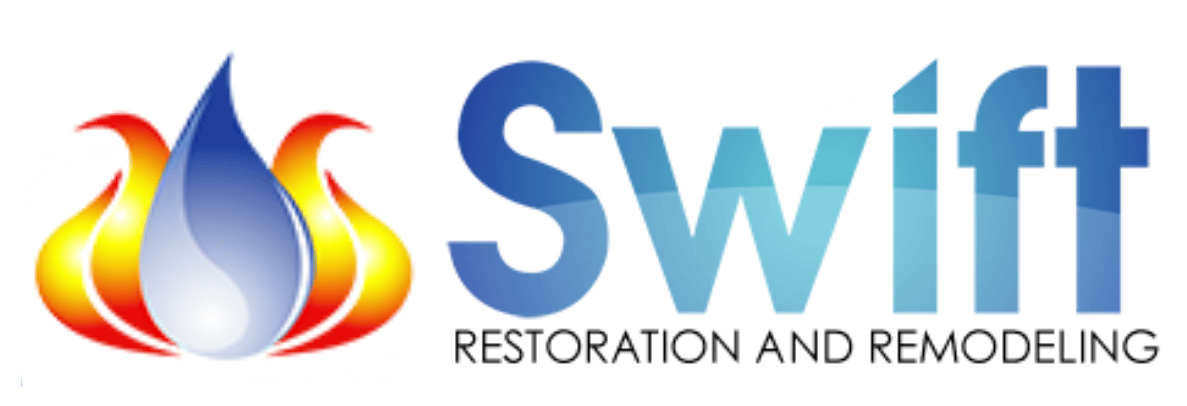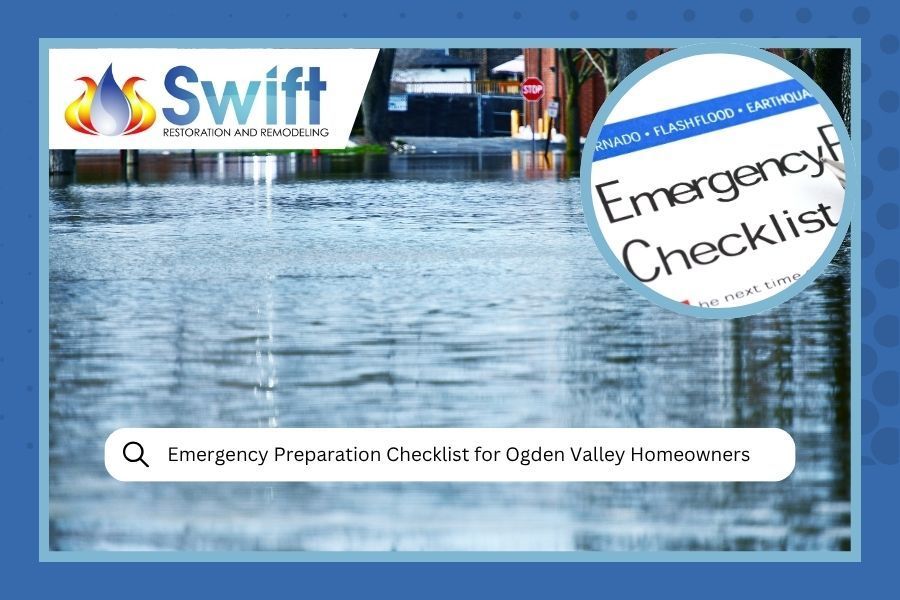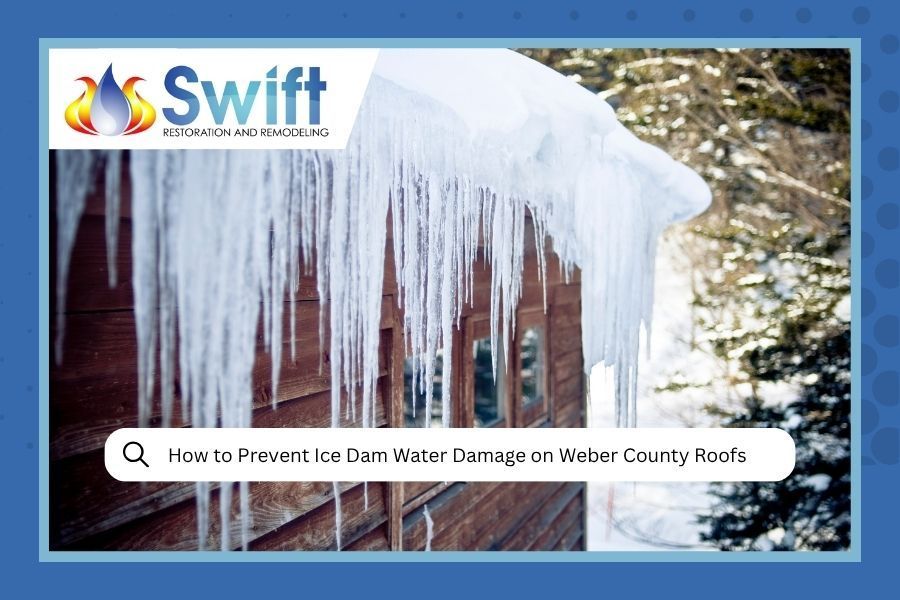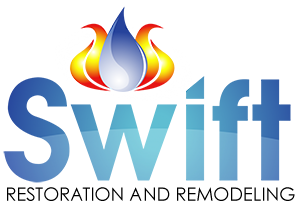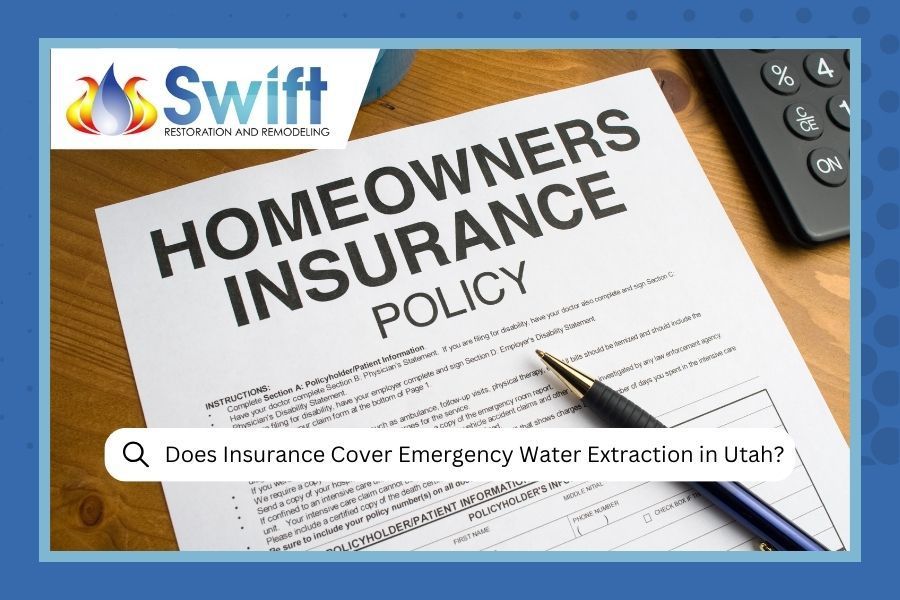
Author: Darin Jenks
Jump To:
When water suddenly invades your home, whether from a burst pipe, storm flooding, or appliance failure, every minute counts. Emergency water extraction isn't just a fancy term for mopping up, it's a critical first step in preventing your home from suffering thousands of dollars in additional damage. But here's what most Utah homeowners really want to know: will insurance help cover the costs? Let's dive into everything you need to know about water damage restoration ogden ut and how they work with your coverage.
Understanding the ins and outs of emergency water extraction could save you from turning a bad day into a financial nightmare. Plus, knowing what your insurance will and won't cover helps you make smart decisions when disaster strikes.
Understanding Emergency Water Extraction: More Than Just Water Removal
Emergency water extraction is the immediate removal of standing water from your property using professional-grade equipment. Think of it as the emergency room treatment for your home after water damage, it's designed to stop the bleeding before things get worse.
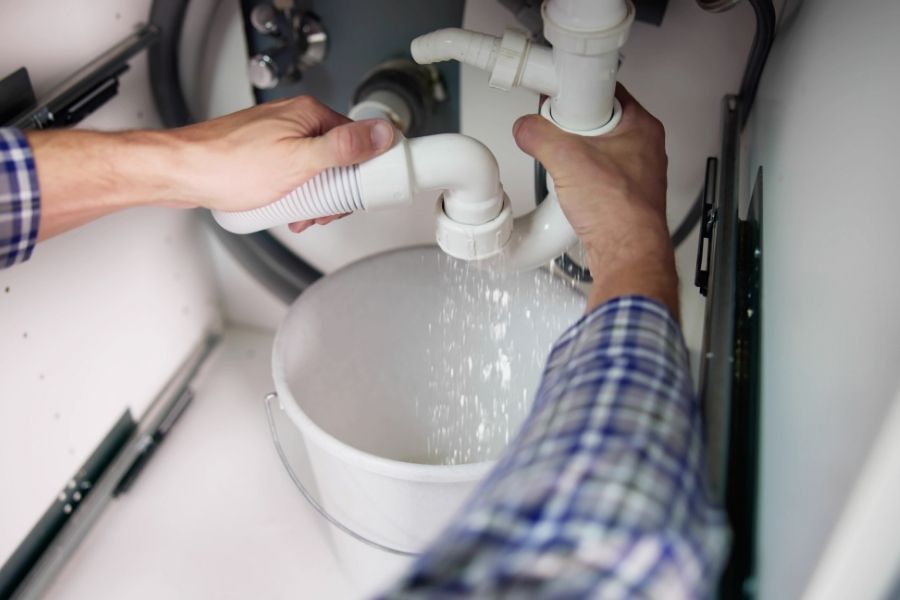
Burst pipes like this one can release hundreds of gallons per hour, making immediate professional water extraction critical to prevent extensive structural damage.
The process involves powerful pumps, industrial vacuums, and specialized tools that can remove thousands of gallons of water quickly and efficiently. Most properties take an average of 3-5 days to completely dry once professional drying equipment is in place, but the extraction phase needs to happen within the first 24-48 hours to prevent secondary damage.
Why Speed Matters in Water Extraction
Water doesn't just sit there waiting for you to deal with it. Within hours, it starts:
- Soaking into walls, floors, and furniture
- Creating perfect conditions for mold growth
- Weakening structural materials like drywall and wood
- Causing electrical hazards if it reaches outlets or wiring
The faster you can get standing water out, the more of your home and belongings you can save. That's why it's called "emergency" water extraction, waiting until tomorrow could literally double your damage.
How Emergency Water Extraction Works: A Step-by-Step Process
Professional water extraction follows a proven process that maximizes water removal while minimizing damage to your home. Here's what happens when you call in the experts:
Emergency Water Extraction Process
Safety Assessment
Evaluate electrical hazards and structural integrity
Water Classification
Determine contamination level and safety protocols
Water Removal
Industrial pumps remove standing water quickly
Moisture Detection
Find hidden moisture in walls and floors
Drying Setup
Professional equipment begins moisture removal
Monitoring
Track progress and adjust equipment as needed
The whole extraction phase usually takes a few hours to a day, depending on the amount of water and size of the affected area.
Emergency Water Damage Right Now?
Don't wait for water damage to get worse. If you're dealing with flooding or leaks right now, get Swift Restoration and Remodeling's emergency team to your Ogden home within hours.
Get Free Emergency AssessmentInsurance Coverage for Emergency Water Extraction in Utah
Here's where things get interesting, and honestly, a bit complicated. Whether your insurance covers emergency water extraction depends on what caused the water damage in the first place.
What's Typically Covered
Most standard homeowner's insurance policies in Utah will cover water extraction when the damage results from:
- Sudden pipe bursts or plumbing failures
- Ice dam damage during winter storms
- Water from firefighting efforts
- Accidental discharge from appliances like washing machines or water heaters
- Storm damage that allows rain into your home through roof or window damage
Most flood policies will cover the structure and contents of your home on the level that waters enter your home, though this specifically refers to flood insurance rather than standard homeowner's policies.
What's Usually Not Covered
Standard homeowner's insurance typically excludes:
- Flood damage from external sources- This requires separate flood insurance
- Gradual leaks- Damage from ongoing maintenance issues
- Sewer backup- Unless you have specific sewer backup coverage
- Ground water seepage- Water coming up through foundation
- Neglect or poor maintenance- Damage you could have prevented
More than 70% of flooding in Utah in the past few years has been outside the state's Special Flood Hazard area, which means many Utah homeowners assume they don't need flood coverage when they actually do. The National Flood Insurance Program (NFIP) provides coverage options that many standard policies don't include.
The Utah-Specific Insurance Landscape
Utah presents some unique challenges when it comes to water damage coverage. Flooding caused by storms, melting snow, hurricanes, and water backup due to inadequate or overloaded drainage systems and broken water mains from outside the home are not covered by most homeowners and renters policies. Given Utah's heavy snowpack and spring runoff patterns, this is particularly important for homeowners to understand.
Types of Water Damage and Coverage Implications
Not all water damage is created equal, and insurance companies definitely know the difference. Understanding these categories helps you know what to expect from your coverage:
| Category | Description | Examples | Insurance Coverage |
|---|---|---|---|
| Category 1: Clean Water | Water from sanitary sources | Supply lines, faucets, rainwater | Usually covered for sudden events |
| Category 2: Gray Water | Slightly contaminated water | Dishwashers, washing machines | Coverage depends on source |
| Category 3: Black Water | Heavily contaminated water | Sewage, flooding, standing water | Often requires special coverage |
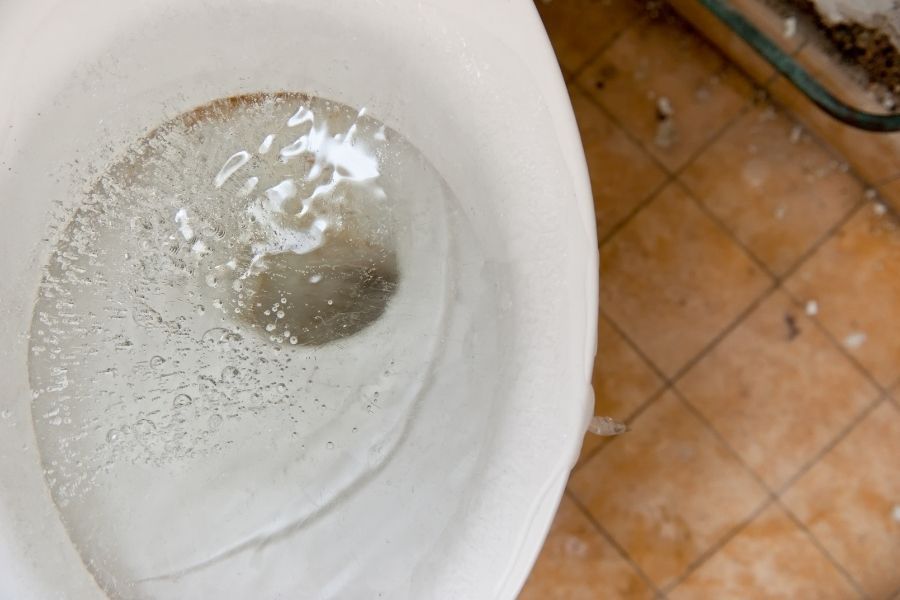
Toilet overflows like this create Category 2 gray water damage, requiring specialized cleanup procedures and potentially different insurance coverage than clean water incidents.
Category 1: Clean Water
This includes water from supply lines, faucets, or rainwater that hasn't mixed with contaminants. Insurance typically covers this type of damage when it results from sudden, accidental events.
Category 2: Gray Water
Slightly contaminated water from sources like dishwashers, washing machines, or toilet overflows (without feces). Coverage depends on the source and circumstances.
Category 3: Black Water
Heavily contaminated water from sewage backups, flooding, or water that's been standing for extended periods. This requires specialized cleanup and may have different coverage rules.
What to Do When Water Damage Strikes
When you discover water in your home, follow this emergency checklist:
Immediate Actions:
- Shut off electricity to affected areas if it's safe to do so
- Stop the water source if possible
- Document everything with photos and videos
- Contact your insurance company to report the claim
- Call professional water extraction services immediately
What NOT to Do:
- Don't wait to see if it will dry on its own
- Don't use regular household fans for drying (they're not powerful enough)
- Don't ignore safety concerns about contaminated water
- Don't delay calling professionals to save money
For more detailed guidance, check out our comprehensive list of what not to do after water damage to avoid making costly mistakes during an emergency.
Working with Insurance: Tips for Utah Homeowners
Getting your insurance claim approved and processed smoothly requires some strategy:
Before You Call
- Review your policy to understand your coverage limits and deductibles
- Locate your policy number and contact information
- Prepare to provide detailed information about when and how the damage occurred
During the Claims Process
- Document everything- Take photos and videos from multiple angles
- Keep detailed records- Save all receipts and communications
- Get multiple estimates- Insurance companies often require estimates from licensed contractors
- Don't delay- Many policies require prompt reporting of claims
Professional restoration companies often work directly with insurance providers and can help streamline the process by providing proper documentation and industry-standard estimates. If you're dealing with contaminated water, you'll also want to understand the risks of sewage backups and proper cleanup procedures.
The Cost of Emergency Water Extraction in Utah
While we can't give you exact pricing (every situation is different), understanding the factors that affect cost helps with planning:
Factors That Influence Cost:
- Amount of water- More water requires more time and equipment
- Type of water- Contaminated water costs more to handle safely
- Affected materials- Hardwood floors vs. concrete affects complexity
- Accessibility- Basements and crawl spaces may cost more
- Time sensitivity- Emergency services during nights or weekends may have premium pricing
What's Often Included:
- Water extraction equipment and labor
- Initial moisture assessment
- Basic dehumidification setup
- Antimicrobial treatments for contaminated water
- Progress monitoring during the drying process
Remember, the cost of professional extraction is almost always less than the cost of replacing everything that gets ruined by waiting. Understanding how to prevent mold after water damage is crucial since mold can begin growing within 24-48 hours of water exposure.
Choosing the Right Water Extraction Company in Utah
Not all water damage companies are created equal. Here's what to look for:
Essential Qualifications:
- Proper licensing and insurance
- IICRC (Institute of Inspection, Cleaning and Restoration Certification) certification
- 24/7 emergency availability
- Experience with insurance claims
- Local references and reviews
Questions to Ask:
- How quickly can you respond?
- What equipment will you use?
- Do you work directly with insurance companies?
- Can you provide a detailed estimate?
- What's your process for monitoring drying progress?
Why Swift Restoration and Remodeling Is Utah's Top Choice
When water damage hits your home in Ogden or surrounding areas, you need a team that understands both the technical side of water extraction and the reality of dealing with insurance companies. Swift Restoration and Remodeling brings over 13 years of restoration experience and 30+ years of construction knowledge to every emergency throughout Weber County and northern Utah.
We're available 24/7 because water damage doesn't wait for business hours. Our team uses professional-grade extraction equipment and moisture detection tools to ensure your home is properly dried, not just surface-cleaned. We follow EPA guidelines for safe water damage restoration to protect your family's health. Plus, we work directly with insurance companies to help streamline your claims process and ensure you get the coverage you deserve.
What sets us apart is our complete approach, we don't just extract water and leave. We handle everything from emergency response through complete restoration, so you don't have to coordinate multiple contractors during an already stressful time.
Don't Let Water Damage Destroy Your Home
Water damage emergencies don't wait for convenient times, and neither should your response.
Available 24/7 throughout Weber County and northern Utah
Frequently Asked Questions
How quickly does emergency water extraction need to happen?
Water extraction should begin within 24-48 hours of the initial damage. The longer water sits, the more likely you are to face secondary damage like mold growth, structural weakening, and increased restoration costs. Professional equipment can begin removing water immediately and start the drying process right away.
Will my insurance cover the full cost of water extraction and restoration?
Coverage depends on your specific policy and the cause of the water damage. Sudden, accidental water damage from burst pipes or appliance failures is typically covered, while gradual leaks or flood damage usually requires separate coverage. Your insurance adjuster will determine coverage based on the circumstances and your policy terms.
What's the difference between water extraction and water damage restoration?
Water extraction is the immediate removal of standing water using pumps and vacuums. Water damage restoration is the complete process of returning your home to pre-damage condition, including extraction, drying, cleaning, repairs, and reconstruction. Think of extraction as emergency care and restoration as the full recovery process.
Can I do water extraction myself to save money?
While you might be able to remove some surface water with a shop vacuum, professional extraction involves much more than removing visible water. Technicians use specialized equipment to detect hidden moisture, properly classify water contamination levels, and set up industrial drying systems. DIY attempts often miss hidden moisture that leads to mold and structural problems later.
Contact Swift Restoration and Remodeling at (385) 412-8633 for immediate emergency water extraction services, or reach out to our team through this online form for a free assessment. Our experienced team is available 24/7 to respond to water emergencies throughout Weber County and northern Utah. We'll work with your insurance company to ensure you get the coverage you deserve while protecting your home from further damage.
